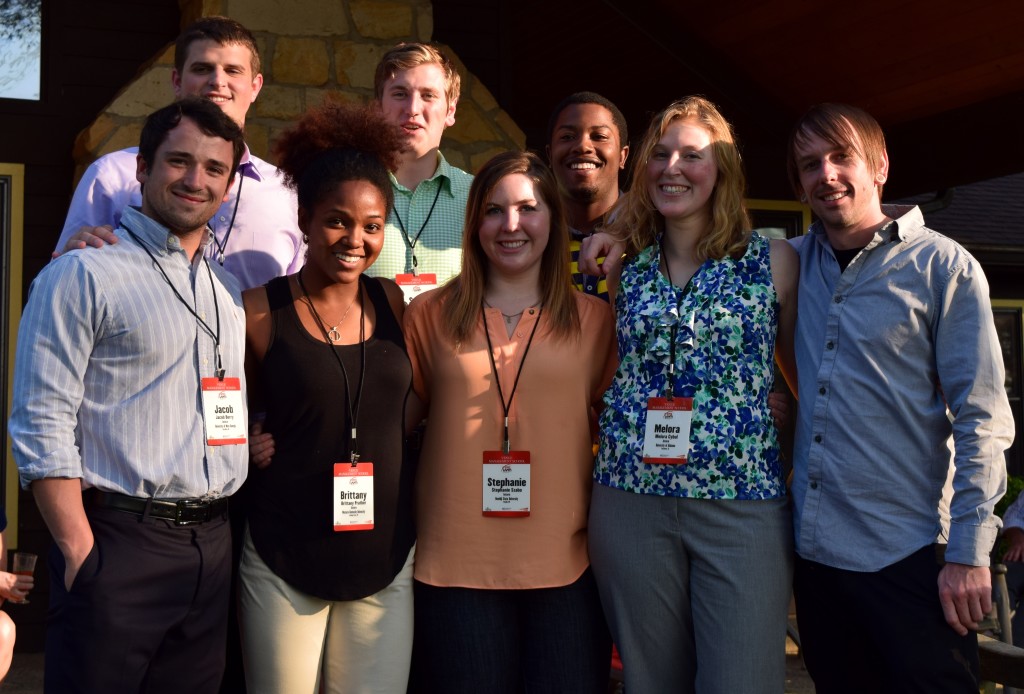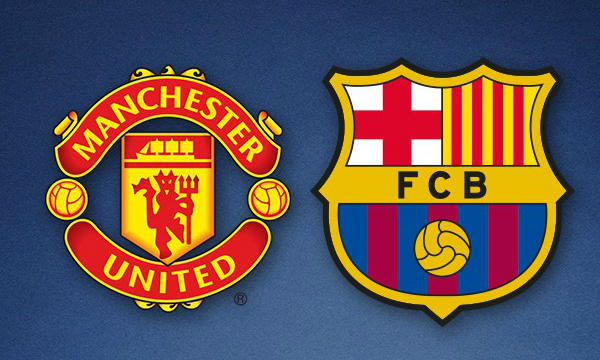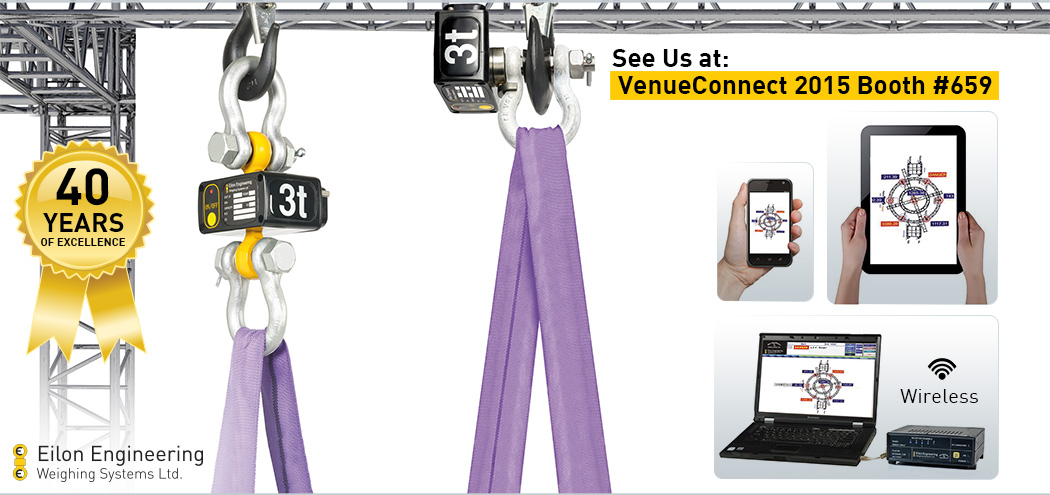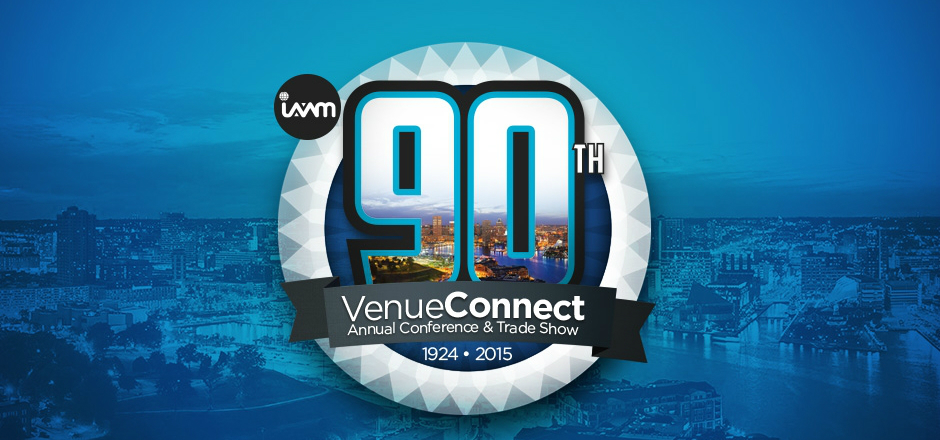VMS Internship: The Best Decision I’ve Ever Made
When I applied for the VMS internship, I didn’t realize what a great opportunity IAVM was offering student members. I have been to other conferences that focus on my interests in the business and had always walked away feeling like I didn’t make a good impact on the people who were in attendance or felt that I wasn’t worth talking to. Even before arriving in Wheeling, I had a few individuals reach out through social media and via email congratulating me on the award and welcoming me to IAVM as a member. This really caught me off guard in a good way.
I had no idea what a great opportunity being a part of VMS was going to be or how willing the students and board members would be to talk to us interns. We were all greeted with smiles and friendly conversation about what they have done in the industry and what we interns hoped and dreamed to do with our careers. We were given plenty of opportunities to meet board members and teachers through luncheons, dinning out in Wheeling, and a dinner as well as breakfast with the board of regents. With over 300 in attendance at VMS, the networking opportunities were endless and allowed us interns to maximize our networking opportunities and meet people where our interests lie in the entertainment industry. Not only that, but we were able to sit through all the classes offered and learn about different and important aspects that drive the industry to positive outcomes. I myself learned about architecture; food service management; enhancing the experience with live events; marketing, advertising, and PR; making and delivering the deal; creativity in the workplace; event management; controlling costs; media relations; leadership and image; tort law; and seven elements of formulation.
I’ve had a particular interest in festivals and had this dream of working in this part of the industry for the last few years. I was able to meet a few individuals who play a big part in this area of the industry. Not only did they educate and share their stories but they also met with me in hopes of helping connect me with the right individuals so that I may get experience and even land a job after graduation. Individuals who aren’t even a part of the festival business reached out and said if I ever need anything or if I think they could help me in any way, that I could get in contact with them and they would help me in any way possible. Hearing this from people I had never met before that week was the best feeling in the world. It made me feel appreciated and helped me believe that people are starting to see that we are the future. Applying for the VMS internship is the best time I’ve ever spent and the best decision I’ve ever made. I want to encourage any students reading this to apply. Take the time and apply for all of the opportunities because I promise you that you WILL take something away from your experience. You won’t regret it.
I want to send a special thanks to Greg Wolfe, Jason LoRusso, Jason Rittenberry, and Mark Herrera for making us interns feel welcome and giving us the experience of a lifetime!
Please visit the IAVM Foundation page for more information on upcoming scholarship and internship opportunities.
First Ever Virtual Reality Live Stream of a Soccer Match
Manchester United and FC Barcelona are playing against each other in a sold-out International Champions Cup match on July 25 at Levi’s Stadium in Santa Clara, California, and NextVR will broadcast it live in virtual reality. Cameras will capture the game from five vantage points on the field and then live stream the footage to fans, press, and VIPs in the stadium, along with select locations worldwide.
“We are excited to partner with RSE Ventures and the International Champions Cup on this incredible tournament,” said Brad Allen, executive chairman of NextVR. “We are putting fans in places where they would never be able to access in a stadium seat – a groundbreaking event for the world of soccer.”
Unlike conventional broadcast platforms, NextVR says virtual reality transports fans to the field where they can follow the action up close. The virtual environment allows viewers the freedom to look around the stadium in any direction at any time.
“Virtual reality will give fans the opportunity to experience live sports like never before,” said Matt Higgins, co-founder and CEO of RSE Ventures. “The International Champions Cup live-stream of the Barcelona vs. Manchester United match will provide a glimpse of what is in store.”
NextVR previously used its delivery platform with the NBA, NHL, MLB, U.S. Open, and partnered with FOX Sports earlier this year to broadcast the NASCAR Sprint Cup Series in California.
Highlights from the soccer game, will be available soon on NextVR’s portal for use with any virtual reality device, including Oculus Rift, Sony Morpheus, Samsung GearVR, and HTC Vive.
(h/t: Gary Singh. Image: Levi’s Stadium)
Young Professionals: Make the Most of Your VenueConnect Experience!
If you’re a Young Professional and are planning on attending IAVM’s VenueConnect conference and trade show in Baltimore next week, NOW is the time to plan ahead to make the most of your experience! VenueConnect offers all venue managers multiple educational, networking, and socialization opportunities, and the professional benefits for Young Professionals can be profound. Take time now to examine all that VenueConnect has to offer to ensure that you are making the most of your time in Baltimore!
EDUCATION
VenueConnect offers such a diverse array of educational seminars, panels, and classes. Check out the schedule ahead of time so you can plan out what topics apply the most to your current job, career interest, or areas of weakness that you are seeking to improve. The VenueConnect schedule contains seminars on topics that range from industry technical expertise to developing your arsenal of leadership skills. Be sure to check the schedule for classes recommended for Young Professionals. Also, or the first time in 2015, IAVM is offering the UpStart program for young professionals and students to build and expand professional relationships and to interact with and pick the brains of venue management leaders. If you are interested in UpStart and have not yet registered, please email Taylor Daniel at Taylor.Daniel@iavm.org as soon as possible to guarantee yourself a spot. Opportunities for young professionals like this do not come about often, so make sure to maximize your return on investment by participating in seminars and programs like UpStart as much as your schedule will allow.
TRADE SHOW
While as a Young Professional, your position may not hold a lot of purchasing power, be sure to stop by the floor of the state-of-the-art VenueConnect Trade Show. Part of knowing and understanding the venue management business is knowing the state of the tools and technology of our trade. VenueConnect will have it all on the floor (literally) in Baltimore for you to peruse and ask questions from the exhibitors in attendance. You will never know when the knowledge and ideas you see at the Trade Show will come in handy in your job or further down the road in your career, so make the most of the Trade Show floor experience while in Baltimore. A special perk to take advantage of at this year’s VenueConnect Trade Show is the opportunity to have your professional headshot photograph taken, so be sure to come prepared to take advantage of this added benefit.
CAREER RESOURCES
Young Professionals will find many career resources at every turn at VenueConnect. The IAVM Career Resource Center will feature the opportunity for Young Professionals (and others) to post their resumes, review the job board for current job postings, as well as the chance to post jobs if needed. Mark Gnatovic from SearchWide will be on hand to review your resume and to offer tips and advice on ways to ensure that your resume is top-notch, so be sure to bring copies of your resume with you to Baltimore.
NETWORKING
Perhaps one of the largest benefits Young Professionals in our industry have to gain from VenueConnect is the benefit of networking with your peers within the venue management industry while at the conference. Whether in seminars, on the Trade Show floor, or between events in the hotel or convention center, take the time to get to know those who work around you within our profession. Not only will you gain industry insights and have the opportunity to exchange ideas and best practices for your career and facility, but you will also make contacts that you will be able to rely upon down the road. Having a network of colleagues that you can turn to when a problem comes up in your building can prove to be invaluable as your career progresses. No one quite knows what it is like to experience a job in a career field as specifically-diverse quite like members of IAVM; don’t let this opportunity to learn from them pass you by! VenueConnect offers fun ways to network, from the Trade Show reception, the Venue Industry Awards Luncheon, and the Legacy Project, which offers the opportunity to give back to the community while networking with other venue professionals! (Not signed up for the Legacy Project yet? No problem! Email Taylor Daniel at Taylor.Daniel@iavm.org!) Not only will you develop professional relationships at VenueConnect, but also lifelong friends.
In a nutshell, the time you spend at VenueConnect will last only a few days. The long-lasting effects of your investment in the experience will last throughout the course of your career and lifetime. Taking a few minutes now to chart your course through Baltimore will pay off many times over once you arrive in just a few short days!
(Image: Visit Baltimore)
Sponsored Story: Load Monitoring in Venues – Improve Safety, Space Utilization, and Revenues
Why is load monitoring so important?
Tens of tons of equipment are hung above people in live events.
Anytime a load is suspended using multiple lift points there exists the potential for a structure to become “statically indeterminate,” making it impossible to calculate the loads on each point; this is known as unpredictable load distribution. Even if a truss/structure appears to be leveled, it is no indication that it is balanced from a load distribution point of view; these circumstances can easily lead to an overload. This is dangerous and in extreme cases can result in truss collapse. The combination of enormous loads suspended above people and the potential for unpredictable load distribution creates an absolute necessity for load monitoring.
For more information on unpredictable load distribution, click here.
Load monitoring systems, like the Ron StageMaster detects all overloads, including those caused due to unpredictable load distribution, and thus prevents potential accidents. They enable the rigger to take immediate preventive actions and balance the load before an overload can occur. Load monitoring systems can also provide “black box” capability, allowing operators to analyze months worth of load data and history.
Beyond Safety – Benefits
The Ron StageMaster can do a lot more than protect people, venue infrastructure, and expensive equipment. Constantly monitoring loads on stage can allow venues to host larger, heavier, more dynamic shows and widen the scope of their activities. Being protected from overload accidents can protect the venue from potential litigation, damages, reputation risk, and prevent costly shut-downs and downtime. Some current StageMaster operators have also increased their revenues by allowing customers to pay for load cell use, and some customers report increases of $500,000 or more per each hall or venue. Ownership of a sophisticated load monitoring system also shows customers that a venue is safety oriented and an adopter of the latest technologies.
The Load Monitoring Revolution
Eilon Engineering launched the first generation of the Ron StageMaster in 2006 after many years of developing cutting edge load monitoring solutions for customers like NASA, Boeing, and Lockheed Martin. Since then, the Ron StageMaster has been adopted by some of the most prestigious venues, tours, and rigging companies including: The Orange County Convention Center, The Boston Symphony, The AT&T Performing Arts Center, The Royal Shakespeare Company, and many others.
As awareness of the problem of unpredictable load distribution grows, so will the use of load monitoring systems like the Ron StageMaster. In some countries legislation has even been enacted requiring riggers to confirm the weight of each and every load that will be suspended above people. Continuous load monitoring allows these riggers to streamline their operation and measure the weight of each and every piece of equipment while lifting. It is only a matter of time before load monitoring systems become a regulated requirement for any venue that suspends equipment above people.
See us at VenueConnect 2015, Booth #659.
Eilon Engineering – Who We Are
Ron StageMaster – Safety Above All
More Education for Your Time
Time is one of the world’s most cherished commodities, and when attending a conference, time is one thing you wish you had more of. Because of that, we’re offering VenueConnect attendees several sessions and interactive round tables that are short on time but big in content.
Let’s take a look at some selected sessions.
Sodexo Composting Mini Session
Saturday, August 1, 5:10-5:25 p.m.
IAVM Membership Booth
Mike Tully, national executive, Sports, Entertainment & Gaming, Sodexo
Sustainability is about protecting the world for future generations. Food waste is a growing global problem of breathtaking scope and is the single greatest contributor of American landfills. Visit the IAVM Membership booth to learn how composting can be part of the solution to solving the food waste crisis.
Green Sports Alliance Mini Session
Sunday, August 2, 12:20-12:35 p.m.
IAVM Membership Booth
David Muller, membership director, Green Sports Alliance
The Green Sports Alliance Greener Cleaning Playbook is designed to help sports facilities reduce the health and environmental threats associated with cleaning sports venues. Beyond protecting health, the cleaning industry uses significant quantities of chemicals, paper products, cleaning equipment, plastic liners for waste receptacles, and other supplies. Visit the IAVM Membership booth to learn how your venue can reduce operating expenses and health risks to cleaning staff, athletes, and fans by greening their cleaning program.
In addition to the mini sessions on the trade show floor, attendees are encouraged to participate in Spark: Small Tables, Big Topics. These interactive round tables take place on Monday, August 3, 8:30-9:45 a.m. Attendees can move from table to table based on their interests. Here is just a sampling of the many topics to be discussed:
Cloud Based Parking Technologies
Dance Flooring
Motorized Rigging—Pros and Cons
Selling Your Alternative Space
Measuring the Effectiveness of Your Leadership
You can view the full lineup on the VenueConnect schedule. See you in Baltimore!
Do you want to receive a Front Row News weekly digest?
Categories
- Allied (861)
- Architecture (147)
- Arenas (747)
- Career (897)
- Convention Centers (895)
- Education (623)
- Events (1,544)
- Food & Beverage (193)
- Foundation (113)
- Guest Experience (1,496)
- Industry News (2,270)
- Leadership (1,888)
- Marketing (150)
- Membership (2,000)
- Music (213)
- Performing Arts Centers (454)
- Professional Development (409)
- Research (127)
- Safety & Security (442)
- Sports (763)
- Stadiums (608)
- Student (159)
- Technology (516)
- Ticketing (92)
- Touring (82)
- Trends (364)
- Uncategorized (743)
- Universities (218)
- Video (25)
- Young Professional (198)
Twitter Feed
- Twitter feed loading
Recent Posts
- Venuworks and ATG Entertainment Selected to Manage Fresno Convention and Entertainment Center
- Seattle Convention Center Announces Strategic Leadership Appointment and Growth Initiatives for 2026
- Peggy Daidakis Humbly Made Convention Center History
- Welcome to Our Newest Members
- New Member Benefit! IAVM Partners with Advantage Training to Elevate Staff Readiness and Guest Experience
Categories
- Allied
- Architecture
- Arenas
- Career
- Convention Centers
- Education
- Events
- Food & Beverage
- Foundation
- Guest Experience
- Industry News
- Leadership
- Marketing
- Membership
- Music
- Performing Arts Centers
- Professional Development
- Research
- Safety & Security
- Sports
- Stadiums
- Student
- Technology
- Ticketing
- Touring
- Trends
- Uncategorized
- Universities
- Video
- Young Professional
Archives
- December 2025
- November 2025
- October 2025
- September 2025
- August 2025
- July 2025
- June 2025
- May 2025
- April 2025
- March 2025
- February 2025
- January 2025
- December 2024
- November 2024
- October 2024
- September 2024
- August 2024
- July 2024
- June 2024
- May 2024
- April 2024
- March 2024
- February 2024
- January 2024
- December 2023
- November 2023
- October 2023
- September 2023
- August 2023
- July 2023
- June 2023
- May 2023
- April 2023
- March 2023
- February 2023
- January 2023
- December 2022
- November 2022
- October 2022
- September 2022
- August 2022
- July 2022
- June 2022
- May 2022
- April 2022
- March 2022
- February 2022
- January 2022
- December 2021
- November 2021
- October 2021
- September 2021
- August 2021
- July 2021
- June 2021
- May 2021
- April 2021
- March 2021
- February 2021
- January 2021
- December 2020
- November 2020
- October 2020
- September 2020
- August 2020
- July 2020
- June 2020
- May 2020
- April 2020
- March 2020
- February 2020
- January 2020
- December 2019
- November 2019
- October 2019
- September 2019
- August 2019
- July 2019
- June 2019
- May 2019
- April 2019
- March 2019
- February 2019
- January 2019
- December 2018
- November 2018
- October 2018
- September 2018
- August 2018
- July 2018
- June 2018
- May 2018
- April 2018
- March 2018
- February 2018
- January 2018
- December 2017
- November 2017
- October 2017
- September 2017
- August 2017
- July 2017
- June 2017
- May 2017
- April 2017
- March 2017
- February 2017
- January 2017
- December 2016
- November 2016
- October 2016
- September 2016
- August 2016
- July 2016
- June 2016
- May 2016
- April 2016
- March 2016
- February 2016
- January 2016
- December 2015
- November 2015
- October 2015
- September 2015
- August 2015
- July 2015
- June 2015
- May 2015
- April 2015
- March 2015
- February 2015
- January 2015
- December 2014
- November 2014
- October 2014
- September 2014
- August 2014
- July 2014
- June 2014
- May 2014
- April 2014
- March 2014
- February 2014
- January 2014
- December 2013
- November 2013
- October 2013
- September 2013
- August 2013
- July 2013
- June 2013
- May 2013
- April 2013
- March 2013
- February 2013
- January 2013
- May 2012
- March 2012
- December 2011
- November 2011
- October 2011
Recent Comments
- Frank Bradshaw, Ph.D., CVE on John Meyer, CVE, a Tireless Advocate of Certification for Venue Professionals, Has Died
- Neil Sulkes on Hilary Hartung, Friend to Many in Venue Marketing, Has Left Us
- Jason Parker, CVE on The Devastation of Hurricane Helene and How We Can Support One Another
- Larry Perkins on Touhey Testifies Against Speculative Ticketing Before Congressional Subcommittee
- Peter Secord on Major Players for Planned Elkhart Amphitheater Were in the Mix at VenueConnect







